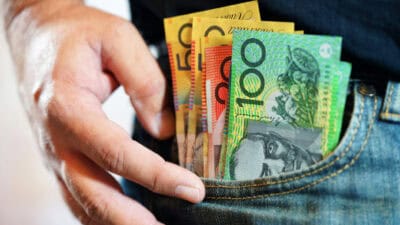The ASX is home to a host of blue-chip shares. If you have a super fund – and you're not sitting on all cash – you almost certainly own some of these ASX shares.
While popular with institutional investors, many retail investors also choose to own blue-chips in their own portfolios.
Below we take a look at some of the potential benefits and drawbacks of investing in blue-chip ASX shares, as well as those listed in US markets.
But first, what exactly defines a company as "blue-chip"?
While there are shades of grey involved, you can generally define blue-chips as companies with a large market cap, a lengthy track record of success and growth, and they tend to be well known brand names. Blue-chips are also sought out for their dividend yields and stable earnings.
The plus side of blue-chips
One of the benefits of blue-chip shares is their track record of delivering long-term gains.
As Josh Gilbert, market analyst at global multi-asset investment platform eToro, notes:
With solid business models, blue-chip stocks have an illustrious history of providing attractive returns for investors. The Dow Jones Index, which tracks over 30 blue-chip stocks in the US, has returned 90% in the last 5 years, and currently has an average dividend yield over 5 years of 2.1%.
While not a perfect comparison with the Dow, when looking at blue-chip ASX shares, we can turn to the S&P/ASX 50 INDEX (ASX: XFL).
The ASX 50 tracks the top 50 Australian listed companies by market capitalisation. According to data from Market Index, these 50 ASX shares make up roughly 64% of Australia's total equity market.
Over the past 5 years, the ASX 50 has underperformed the Dow in terms of share price gains, as many US stocks have outperformed their Aussie counterparts. The ASX 50 has gained 32.2% since 15 July 2016.
In terms of dividends, blue-chip ASX shares surpass the Dow, with an average dividend yield of 2.95% on the ASX 50, as at December 2020. Australia's blue-chip dividends also often come with franking credits, leaving more money in investors' pockets come tax time.
What ASX shares are listed in the ASX 50?
Almost every company in the ASX 50 is a well-recognised name.
Topping the list, as the biggest company trading on the ASX, is Commonwealth Bank of Australia (ASX: CBA). CBA has an eye-popping market cap of $174.6 billion. CBA pays a 2.5% dividend yield, fully franked.
Not far behind, as the second biggest blue-chip ASX share, is mining giant BHP Group Ltd (ASX: BHP). BHP has a market cap of $149.4 billion. BHP pays a 4.1% dividend yield, also fully franked.
But it's not just miners and banks populating the ASX 50, although they do tend to dominate.
You'll also find buy now, pay later (BNPL) heavyweight Afterpay Ltd (ASX: APT) in the index. Afterpay currently sits at number 15 in terms of size, with a market cap of $34.3 billion. Afterpay does not currently pay a dividend.
Are blue-chips less risky?
You need only look a the price charts of most blue-chips and compare them to the charts of small-cap speculative shares to see that there tends to be far less volatility among the big companies.
According to eToro's Gilbert:
Found in almost every industry, blue-chip stocks are considered an alternative to riskier, less established growth stocks. This has often led to blue-chip stocks being labelled as "safe havens", as they tend to have less volatile swings than what we see from growth stocks.
With that said, when national or global economic growth takes a hit, as with the GFC in 2008 and the COVID-19 market crash in early 2020, blue-chips aren't invulnerable to the wider selloff.
Gilbert says:
If we take the Dow Jones Index as an example, the top stocks from the index are likely to perform well in economic recoveries. When the global pandemic caused markets to crash in March 2020, the S&P 500 traded at a new record high just five months later, whereas the Dow Jones Index took nine months, as cyclical equities remained out of favour when growth stocks boomed.
We can see a similar thing play out on the ASX.
Since the 21 February 2020 high water mark, the All Ordinaries Index (ASX: XAO) has now gained 5.45%. The ASX 50, on the other hand, is only up 0.03% since 21 February.
Blue-chips or speculative shares?
Every investor needs to weigh up the amount of risk they're willing to take on board versus the amount of gains they're after.
As Gilbert notes, that means blue-chips won't meet the needs of every investment plan:
Investing in blue-chip stocks is ideal for those investors looking for steady returns, but it's unlikely to meet speculative investors' strategies. With blue-chip stocks, we rarely see significant day-to-day movements and growth is often predictable, which doesn't meet the criteria that many speculative investors look for.
That doesn't mean that blue-chip share can't grow. According to Gilbert:
Many of the world's biggest stocks by market capitalisation are blue-chip stocks. And these powerhouses continue to grow and dominate our society. Both Apple [Apple Inc (NASDAQ: AAPL)] and Microsoft [Microsoft Corporation (NASDAQ: MSFT)] have vastly outperformed the market over the last five years, demonstrating that investors can still find significant returns in blue-chip stocks.
The same is true for many leading blue-chip ASX shares.
The 5-year price chart for BHP shows a steady rise over the years (though not without it's downturns, of course!). The BHP share price has gained 149% in 5 years, and that doesn't include its dividend payments.









